Part two of a three-part series explores the five pillars of the future of diagnostics.

Predicting exactly what the future will look like is a fool’s errand. However, we can make educated predictions about the future, based on our understanding of how customer requirements and expectations are changing. We have established that COVID-19 has permanently altered customer requirements and expectations. The Big Three and the Oil Crisis of the 1970s show how even well-established industries must shift with customer requirements and expectations, and the new business opportunities that come from a changing landscape. The history of pregnancy tests illuminates the path of the diagnostics industry for the future.
By applying these lessons and understanding the changing customer requirements, we establish that the future of diagnostics and healthcare will be built on the following five pillars: home-centered care and testing, data, automation, price, and supply chain. A sound understanding of these key pillars will help us discern what the market will require in the future and discover future business opportunities.
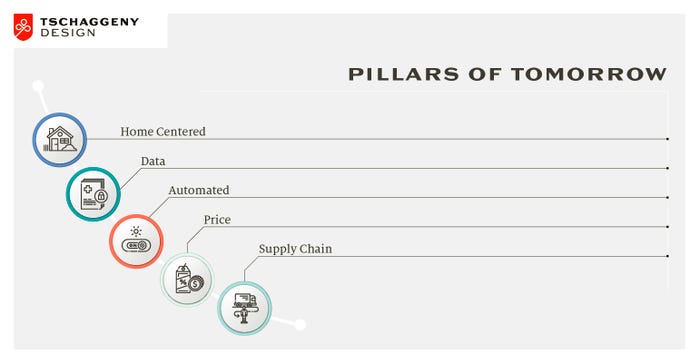
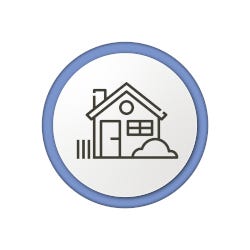 Home Centered
Home Centered

Healthcare and diagnostics will be forced to move to the patient’s home. People want to be at home. We feel most comfortable at home in our own beds. We want solutions that allow us the ease and convenience of staying home without having to schedule outside appointments and traveling.
Example: Testing for pregnancy went to where the patient was—the home.
The location of healthcare is going to change because of COVID-19.1 Telemedicine via a remote meeting will become the normal method to interface with a healthcare professional. Telemedicine was growing before COVID, but COVID has accelerated its growth and acceptance. Thanks to COVID, the customer has become familiar with and accepting of the new norm of doing life via remote meetings. Going to crowded places with sick people isn’t accepted by the customer anymore. Going to the doctor's office is a hassle, and in the future it will become as outdated and foreign as a house call is to us today. Since healthcare will be converted into a remote process, the diagnostics industry will be obligated to change; the system in which it operates will adapt to the new industry norm. Diagnostics will have to follow the patient to the home.
With diagnostics being pushed to the patient's home, medical professionals will be taken out of the sample collection and testing processes. This will require new tests that can be accurately and easily be run by anyone without training.
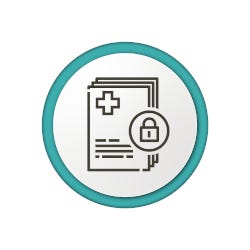 Data
Data

Data will be more important than ever. For the first time, patients will control their own data. This will change the direction of information flow. It will go from the patient to the doctor.
“You can’t manage what you can’t measure.” -Anonymous
Example: With the home pregnancy test, women know very quickly after conception that they are pregnant and they need to seek medical attention. When they see a doctor, they can confidently tell the doctor they are pregnant.
Moving healthcare and diagnostics to the patient's home will change how information in the healthcare process flows. It won’t flow from the healthcare provider to the patient anymore. Information will flow from the patient to the healthcare provider. This change of data flow disrupts the entire healthcare landscape and presents many business opportunities for developing new methods to verify and transfer information safely and privately. Controlling and enabling data transfer is already a huge market, but the change of information flow throws out a lot of what we currently have.
Once a patient has been diagnosed, how would he or she get further healthcare? What tools will the patient need to be able to get needed information as to what the next step is? Does the patient interface with an AI doctor to help make sense of a result or talk with a healthcare professional specifically trained to deal with telemedicine? Where does the patient get medication? How do we do monitor the progress of a treatment when the treatment takes place at home?
The changes to the diagnostics world will force the entire medical system to change. We have only been able to measure points at a time with the current diagnostics tools. The tools that will be developed are going to change this. They will allow us to measure much more often than we have in the past. The ability to measure is going to change our treatments and use of drugs to combat illness because we will be able to monitor the outcome of the medicine in real time. This will allow us to move to what could be called “tailored medicine.”
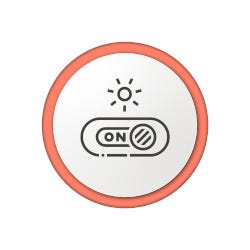 Automation
Automation

As testing moves closer to the patient's home, it will not be practical to require trained professionals to make home visits. Future tests and healthcare treatments are going to be sufficiently user-friendly to allow anyone to use them. Automation is going to be required to facilitate making tests and healthcare treatments that can be used at home.
Example: Self-administering the pregnancy test takes very little skill. The woman follows a few simple steps and immediately receives results. She does not need to measure and add additional materials to the test. Anyone can do it. The test is designed to be completely automated and self-sufficient.
To successfully move diagnostics to the home, the sample collection process, administration of the test, processing the results, data, and reporting will all have to be redesigned so they are easy to use by someone with no training.
For instance, the sample collection processes will need to be made simple, yet robust, because patients will be collecting their own samples. We currently use blood as a means to diagnose many things, but blood is difficult to get, not to mention painful. Our current use of needles to collect blood is neither conducive nor safe for home diagnostics. People have issues with blood—fainting, bruising, risk of infection at the puncture site.... the human risk factors go on. In order to effectively use blood as a diagnosis option, new blood collection methods would need to be developed to ensure the patient can perform this process reliably at home.
Safer and more reliable sample alternatives include saliva, urine, and feces, all of which are easy to collect and don’t need to be handled as carefully as blood.2 Moving away from blood testing will require new solutions to testing issues. Developing and selling these new sample collection methods and tests will provide business opportunities.
For the tests that are too complex to be home based, yet simple enough to omit the need for professionally trained processing, new automated testing will emerge. These tests will be small, robust, and cheap enough to be located out in the communities, giving way to yet another business opportunity.
 Price
Price

The price of diagnostics in the future will be driven down because the sheer quantity of testing will necessitate it. Other factors will include ensuring economics of scale, automation, and the reduced production costs of simplified products. The customers themselves are going to be very cost conscious. One of the phenomena observed during the COVID-19 pandemic and the ensuing lockdowns is that people are not as willing to pay for at-home experiences as they are for going somewhere for those services. A good example of this phenomenon is that students are less willing to pay for an online college experience than a face-to-face experience at a physical campus.3
Example: Pregnancy tests are now very affordable. People don’t worry if they can afford one or not. When they need one, they buy the test using their own money without the need for health insurance to cover costs.
Price is going to be a major player in determining which products and services edge ahead and win in the future. One determining factor will be the ability to place the test directly in the patient’s hands; this will require moving testing away from large facilities, like laboratories, with their hefty associated overhead. Patients require affordable healthcare, and driving down that cost is another business opportunity.
Our current healthcare and diagnostics systems have large and expensive support mechanisms behind them—employees to run the tests, laboratories where the testing takes place, and medical professionals to interpret the testing results. The pressure to lower the price is going to make these support mechanisms obsolete.
The need for not only new tests and the science behind them but also entirely new supporting mechanisms offers an indefinite number of business opportunities.
Price is also affected by the types of healthcare professions that are needed to perform telemedicine and home diagnostics. The physician assistant (PA) is a relatively new type of healthcare professional. This healthcare profession began in the mid-1960s when physicians and educators realized there was a shortage of primary care physicians. They asked themselves if a new, less-expensive type of healthcare education could fill that void with a new profession; the solution was the physician assistant.4 In the future, we will need new healthcare professions trained to facilitate home-diagnosed healthcare.
With inexpensive, more-readily available testing and patients controlling their information, healthcare will become proactive instead of reactive. Patients will have the ability to track their health over time and have access to more testing and information whenever the need arises. This type of proactive health monitoring reaps enormous long-term benefits. It enables easier and quicker identification of early-stage medical issues, providing the patient the opportunity to take proactive action to prevent serious chronic illnesses. It also helps the patient stave off age-related health issues as they get older.
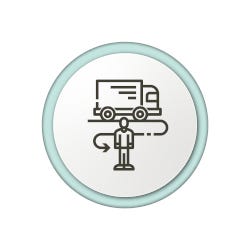 Supply Chain
Supply Chain

We are going to buy these products from different sources than we currently do. We won’t have to go through the current gatekeepers, like doctors, to get tested. The people supplying testing and medical supplies will combine, allowing around-the-clock access.
Example: Pregnancy tests aren’t bought through a doctor. They can be purchased in many places and at all times, even from vending machines.
The diagnostics supply chain is going to change. The customer will purchase much of their healthcare and diagnostics supplies directly from a retailer instead of from healthcare professionals as they’ve done in the past because the healthcare system will be involved later in the process. Companies such as Walgreens are already pivoting to provide not only COVID testing but also COVID vaccinations at their stores.5 Someone will need to sell the customer these healthcare and diagnostics supplies—more business opportunities.
Getting medical treatment quickly is essential. Ordering tests from the internet may not be the ideal future solution, if the wait time between ordering and receiving the test is long. Some of the more complex tests, like the ones requiring instrumentation, are going to require the patient to deliver the sample to the testing location. These testing locations could have complex machines, akin to vending machines, and be located at stores or healthcare professional offices. This would provide the patient with easier access to further medical care and supplies. Developing the new tests and sample collection devices are big business opportunities. Supplying the components for these raw materials is an additional business opportunity.
Applying the lessons of the past and understanding the pillars that tomorrow’s world will be built on gives us a better understanding of both the emerging customer requirements and how the market will need to shift to meet them. In our next article, we will examine what the world looks like in the future and the business opportunities there.
Stay tuned for "The COVID Effect: A Look into the Future of Diagnostics and Healthcare, Part Three," which will explore what the future of diagnostics could look like.
And here's part one if you missed it: The COVID Effect: A Look into the Future of Diagnostics and Healthcare.
References
"Coronavirus Will Change the World Permanently. Here’s How." March 19, 2020. Politico Magazine. www.politico.com/news/magazine/2020/03/19/coronavirus-effect-economy-life-society-analysis-covid-135579
Randad, Pranay R. et al. “COVID-19 serology at population scale: SARS-CoV-2-specific antibody response in saliva”, May 26, 2020. Journal of Clinical Microbiology, 10.1128/JCM.02204-20
"As Colleges Move Classes Online, Families Rebel Against the Cost." August 15, 2020. DNYUZ. dnyuz.com/2020/08/15/as-colleges-move-classes-online-families-rebel-against-the-cost/
"History of the PA Profession." American Academy of PAs. https://www.aapa.org/about/history/
Japsen, Bruce. "Walgreens Expands COVID-19 Vaccines to Drugstores in 39 States." March 9, 2021. Forbes. www.forbes.com/sites/brucejapsen/2021/03/09/walgreens-expands-covid-19-vaccination-to-pharmacies-in-39-states
About the Author(s)
You May Also Like




